#Tantallon Castle
Explore tagged Tumblr posts
Text

Tantallon, from Auldhame
115 notes
·
View notes
Text


distant Bass Rock
101 notes
·
View notes
Text


Tantallon Castle from Seacliff Beach last week
61 notes
·
View notes
Text
youtube


Camille Lemoine



Gemma Dagger


Rachel Lamb

Wendy McMurdo






Izzy Leach




Margaret Mitchell
https://diormagazine.dior.com/dior-magazine-en/dior-magazine-48/fashion/from-dior-to-scotland
Christian Dior - Cruise 2025
Highlands, Tantallon Castle, Edinburgh
Catwalk at Drummond castle, Scotland, June 3rd 2024







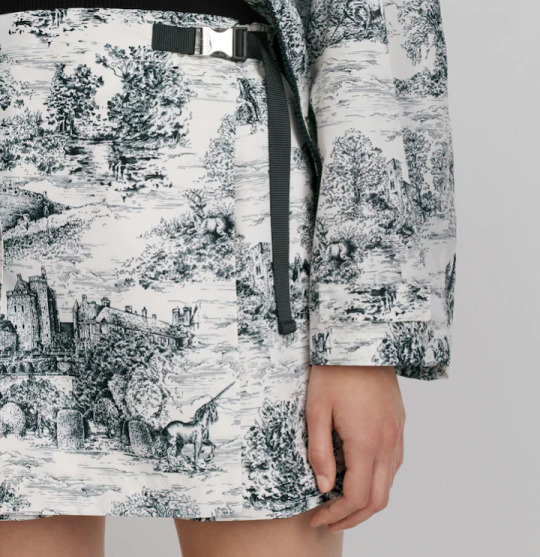
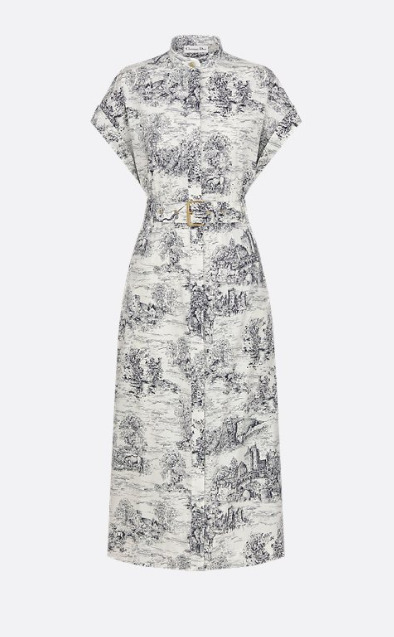
Pietro Ruffo's blue Toile de Jouy Scotland motif

Yilan Hua wears Dior for Vogue Czech December 2024 - https://anneofcarversville.com/fashion/2024/12/16/7yilan-hua-vogue-czechoslovakia
https://www.dior.com/en_gb/fashion/womens-fashion/ready-to-wear-shows/cruise-2025-show
For Maria Grazia Chiuri, the presentation of the cruise collection is an opportunity to follow the steps of Christian Dior around the world.
Visual journeys that each time invoke new experiences. In 1955, Monsieur Dior presented his work in Perthshire, Scotland, in the ballroom of the Gleneagles Hotel. For the Creative Director of Dior Women’s Collections, this country has become the narrative framework of the Dior cruise 2025 collection – unveiled in the gardens of Drummond Castle – where memories, inspirations and suggestions fuse to generate shapes and embroideries.
The unicorn and the thistle, both symbols of Scotland, provide an unprecedented variation of the Millefleurs motif, and are transposed into heraldic embroidery, recalling the savoir-faire of this exceptional technique, a language in itself, a form of resilience. An emblem of Mary Stuart that can be found in Clare Hunter’s book Embroidering Her Truth: Mary, Queen of Scots and the Language of Power1.
A map of Scotland adorns some of the models in this cruise line, sketching a cartography of collaborations and cultural encounters deployed specially for this défilé, such as the tribute to tartan: “It’s probably the only fancy fabric that resists fashions,” Christian Dior wrote in The Little Dictionary of Fashion2. Blending various colors and the cut of a kilt, this historic cloth, intrinsically characteristic of the region, continues to cross fashions past and present, from romanticism to punk.
Photographs from the spring-summer 1955 presentation are transformed into prints or employed as appliques on the edges of kilts or pea coats, in a kind of cinematic montage. They constitute objects of memory punctuating this Dior cruise 2025 collection.
The looks merge contrasting elements, including the diverging textures of velvet and lace dressing the contemporary equestrian. Certain silhouettes feature exaggeratedly wide sleeves which, on white shirts, appear under little dresses with gathered skirts and bustiers resplendent with embroidery. The latter can be found on several dark, iridescent pieces that are sometimes adorned with pearls. Lace collars, in their turn, brighten up the black.
Also used in very light materials, tartan is the common thread running through this veritable celebration of the kilt, whether made directly in Scotland or reinterpreted. Not to forget dresses conceived in diverse lengths, as well as coats and capes with large hoods. Rain boots come and go. Small jackets adopt the gray of menswear fabrics, and the iconic Bar jacket sports black velvet Brandenburg buttons.
This same velvet magnifies an evening gown, the fitted bust of which emphasizes the oversized skirt. Feathery woven fishnet metamorphoses into long, lightweight dresses, embracing the mauve hue of nostalgia.
This inventive choreography is made up of interconnected affinities. Like an testimony revisiting stories of earlier times, it offers a journey where the different stages become the subjects of creativity.
1 Embroidering Her Truth: Mary, Queen of Scots and the Language of Power, Clare Hunter, Sceptre, 2022.
2 The Little Dictionary of Fashion, Christian Dior, Cassell & Company Ltd, London, 1954, translated into French in 2007 as an appendix to the catalogue Dior 60 Years of Style.
Odes To Mary Stuart
Inspired by Scottish craft traditions and the iconic figure of Mary Stuart, the silhouettes reinvent the look of the visionary sovereign, from romance to punk, tartan to corset-armor, dresses with accentuated shoulders to tweed sets and prodigious couture embroidery, echoing that of Holyrood Palace*. Between celebration and transgression(s), the iconic Argyle motif is unveiled in a fine open-work version; emblematic Fair Isle lace is modernized with a subtle interplay of material and transparency; crinolines are boldly revisited, punctuated by elements borrowed from counter-cultures. All these reinterpreted textile symbols marvelously revive the founding ties between France and Scotland.
* Primary residence of the kings and queens of Scotland
Punk Attitude
Poetic and all-conquering, the silhouettes designed by Maria Grazia Chiuri for the Dior cruise 2025 show are enhanced by accessories that convey a powerful, impetuous femininity. Worn with high socks, leather riding boots are adorned with zips and multiple straps, promising a confident, determined gait. Inspired by traditional sporran, kilts are worn with saddlebags emblazoned with the initials “CD”. A tribute to the customs that make Scotland so rich, the bags' shoulder straps are decorated with heraldic symbols that combine the House's emblems with those of this fascinating country. Wonderful finishing touches include necklaces with delicate black ribbons and pendants featuring marine motifs, a poetic evocation of the seas that shape the beauty of coastal landscapes.
Dior in Scotland: The making of the collection
youtube
Full show:
youtube
#Scotland#dior#Christian Dior#fashion#clothes#clothing#Youtube#margaret mitchell#Izzy Leach#wendy mcmurdo#yilan hua#luka booth#vogue#mary queen of scots#mary stuart#scottish history#Rachel Lamb#Gemma Dagger#Camille Lemoine#Tantallon Castle#Drummond castle#Pietro Ruffo#harris tweed#johnstons of Elgin
4 notes
·
View notes
Text

Tantallon Castle is a ruined mid-14th-century fortress, located 5 kilometres (3.1 mi) east of North Berwick, in East Lothian, Scotland. It sits atop a promontory opposite the Bass Rock, looking out onto the Firth of Forth. The last medieval curtain wall castle to be constructed in Scotland, Tantallon comprises a single wall blocking off the headland, with the other three sides naturally protected by sea cliffs.
Tantallon was built in the mid 14th century by William Douglas, 1st Earl of Douglas. It was passed to his illegitimate son, George Douglas, later created Earl of Angus, and despite several sieges, it remained the property of his descendants for much of its history. It was besieged by King James IV in 1491, and again by his successor James V in 1527, when extensive damage was done. Tantallon saw action in the First Bishops' War in 1639, and again during Oliver Cromwell's invasion of Scotland in 1651, when it was once more severely damaged. It was sold by the Marquis of Douglas in 1699 to Hew Dalrymple, Lord North Berwick and the ruin is today in the care of Historic Environment Scotland.
4 notes
·
View notes
Text

Tantallon Castle, North Berwick
1 note
·
View note
Text

Tantallon Castle: History
Tantallon was the last truly great castle built in Scotland. William Douglas, a nobleman, built the mighty fortress in the mid-1300s, at the height of his power.
The house of Douglas split into two branches in the 1380s: the ‘Black’ and the ‘Red’. Tantallon passed to the junior line – the earls of Angus also known as the ‘Red Douglases’. They owned the castle for the next 300 years, often clashing with the Crown.
The castle was besieged by:
James IV in 1491
James V in 1528
Oliver Cromwell in 1651
1 note
·
View note
Text
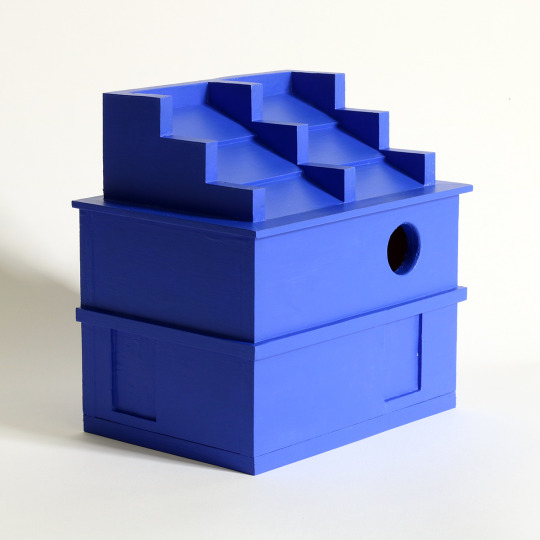
Dovecot, Tantallon
21 x 22.5 x 15.5cm
Painted wood
Based on the dovecot at Tantallon Castle, East Lothian
61 notes
·
View notes
Text
A ghost in the window
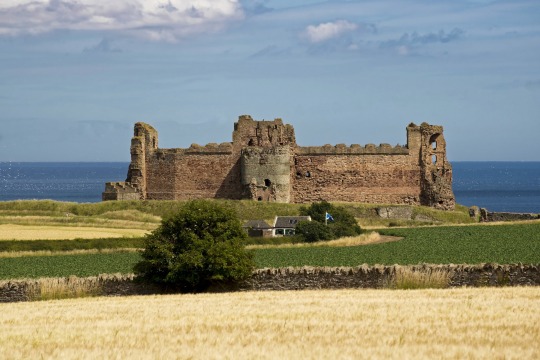
Tantallon Castle is no longer the fortress built by the first Earl of Douglas atop the cliffs that plunge into the waters of the southern shore of the Firth of Forth. But it is the prototypical Scottish castle with a ghost.
After a siege during the invasion of Scotland by Oliver Cromwell's army, it was largely demolished in 1651, having already suffered a partial demolition ordered by King James V of Scotland in the first half of the 16th century.
In 2008, a tourist took a photograph of the castle showing a figure presumably in period costume (that of James V to be precise). The fact of finding a Scottish castle with a ghost should not sound so far-fetched, but the London newspaper The Times took notice of the case and spoke of a speck of dust on the photographer's lens.
Tantallon is a unique construction in Scotland: the castle's defences consist of a single great wall that secures the promontory. The south-east, north-east and north-west approaches are naturally defended by sea cliffs and only protected by relatively small defensive walls. In the southwest, a huge curtain wall blocks the end of the promontory, forming the inner courtyard.
When they also became Earls of Angus, the Douglases were called Red Angus and managed to collect a number of other titles with which they built up their power in the East Lothian area over three centuries.
However, during the reign of James V, the Angus allied themselves with Henry VIII of England and staged a full-blown coup d'état, including the capture of the infant king, around 1525. However, the king fled and eventually organised the Siege of Tantallon, which took place around 1528.
At the end of the 17th century, the 12th Earl of Angus had to sell what were already ruins to cover his gambling debts. The new owner, who already had some of the former Red Angus holdings in his hands, left the castle derelict and allowed its stones to be used for building.
In the 19th century they allowed some restoration work and in the 20th century they handed it over to the authorities for further conservation.
2 notes
·
View notes
Text
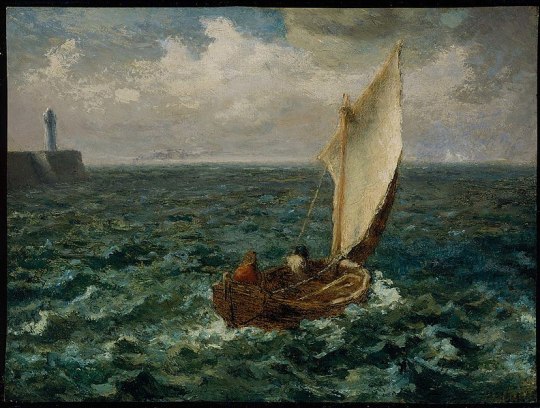
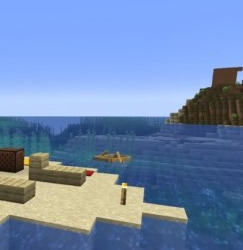




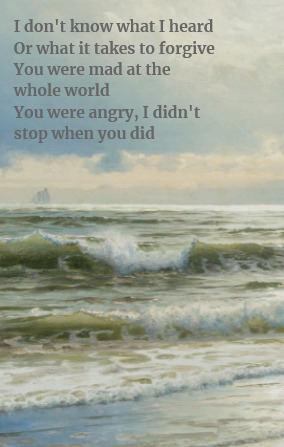



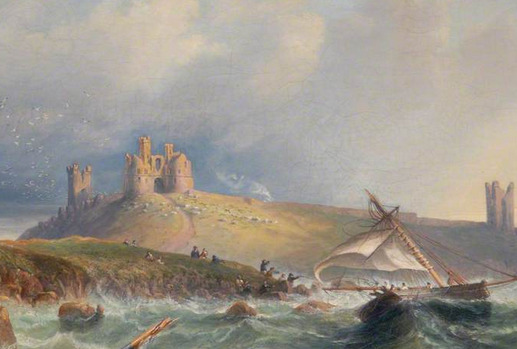
Two brothers on the same beach and an ocean away.
Lyrics are from Older by Searows. Rest of credit is below the cut.
Jean-François Millet, Fishing Boat / Jean Désiré Gustave Courbet, Beach at Dieppe, The Fishing Boat / Margaret W. Tarrant / Charles Euphrasie Kuwasseg, The Beach / Frederic Edwin Church, Stormy Sea / William Trost Richards, Luminist Coastal Scene / Winslow Homer, Dad's Coming! / Alexander Nasmyth, A View of Tantallon Castle with the Bass Rock / John Wilson Carmichael, A Cutter in Distress to the South of Dunstanburgh Castle, Northumberland
30 notes
·
View notes
Text
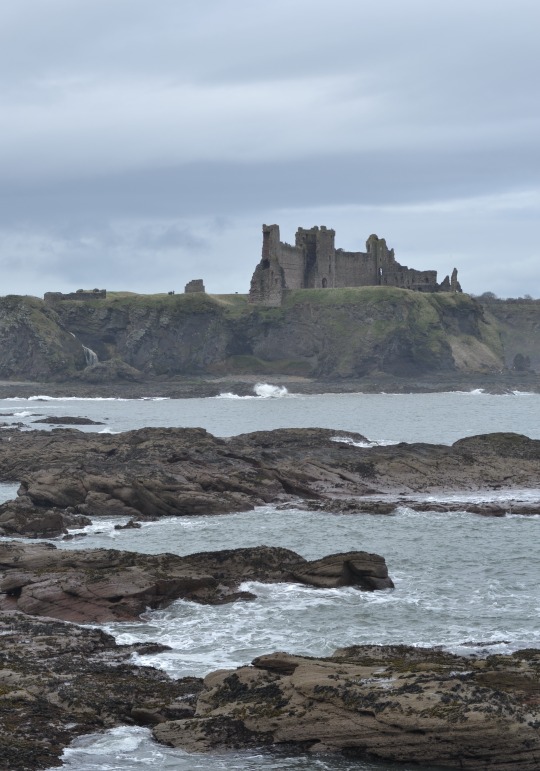
Tantallon Castle
10 notes
·
View notes
Text


sunlight pouring over empty ruins
4 notes
·
View notes
Text
Alba gu bràth
#scotland#scottish#tantallon castle#east lothian#My video#Today#saltire#st andrews cros#national flag
45 notes
·
View notes
Text

Tantallon Castle, East Lothian
11 notes
·
View notes
Text



Tantallon Castle, East Lothian, Scotland
6 notes
·
View notes
Text

William Thornley - Tantallon Castle
3 notes
·
View notes